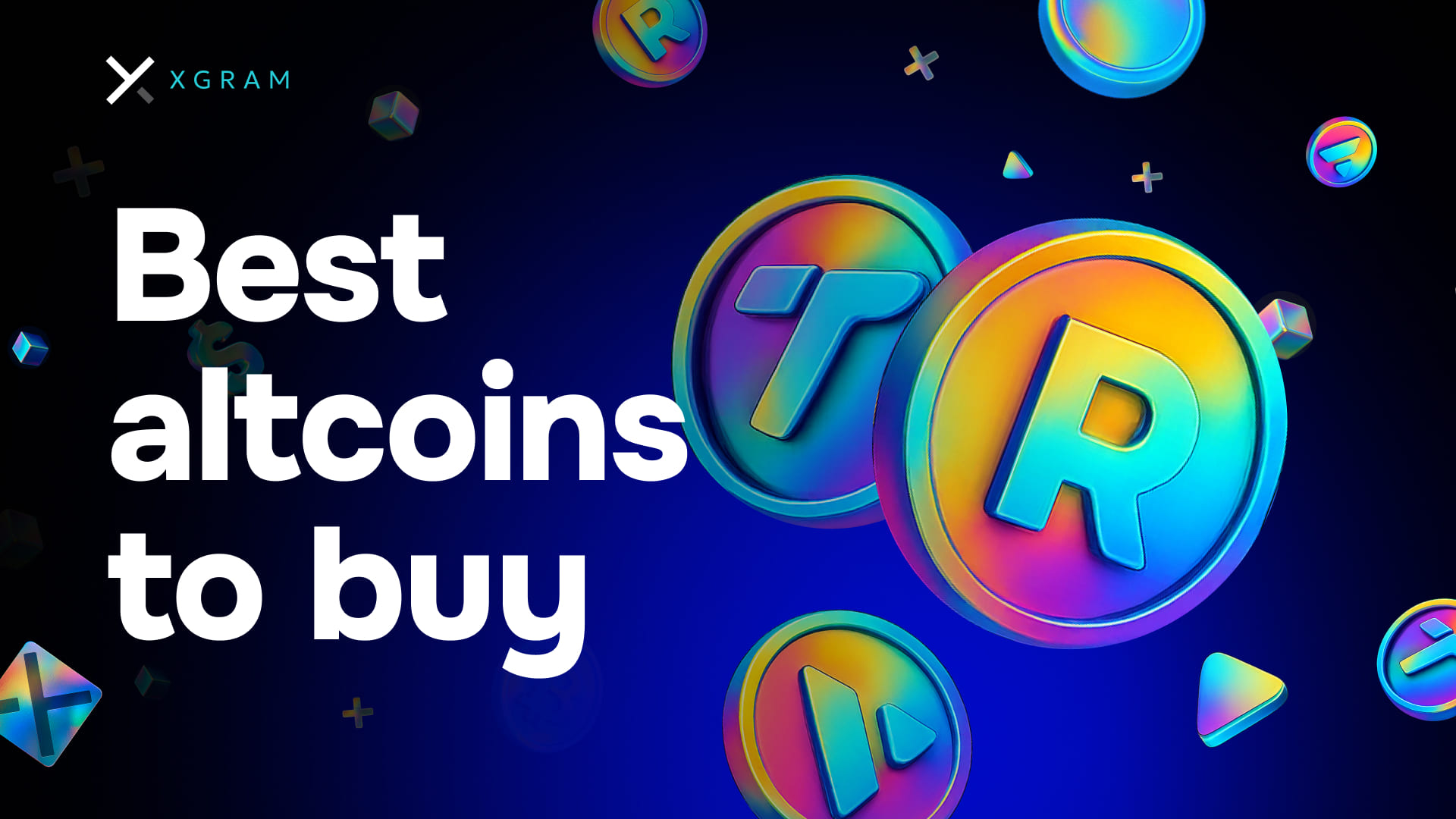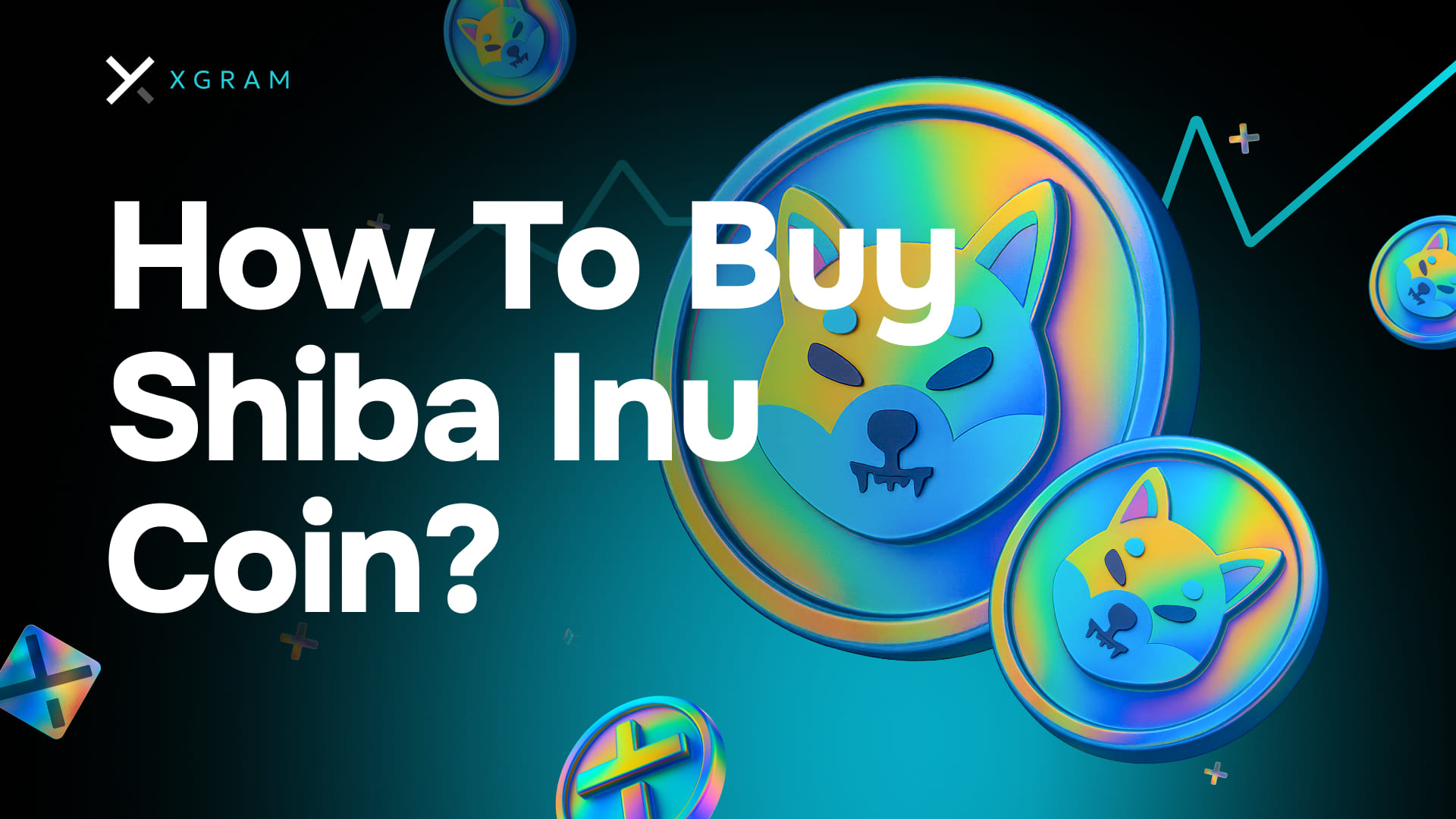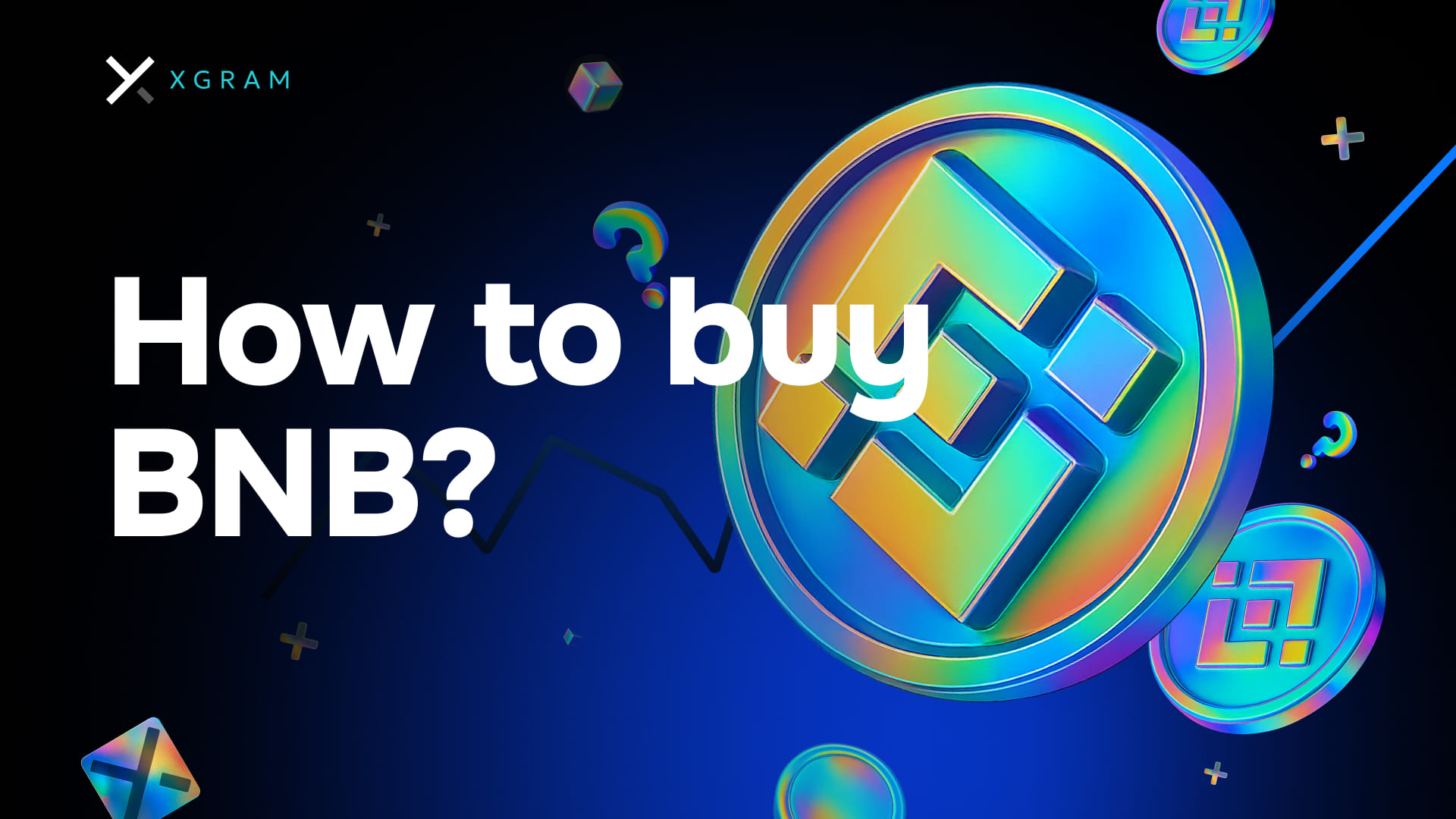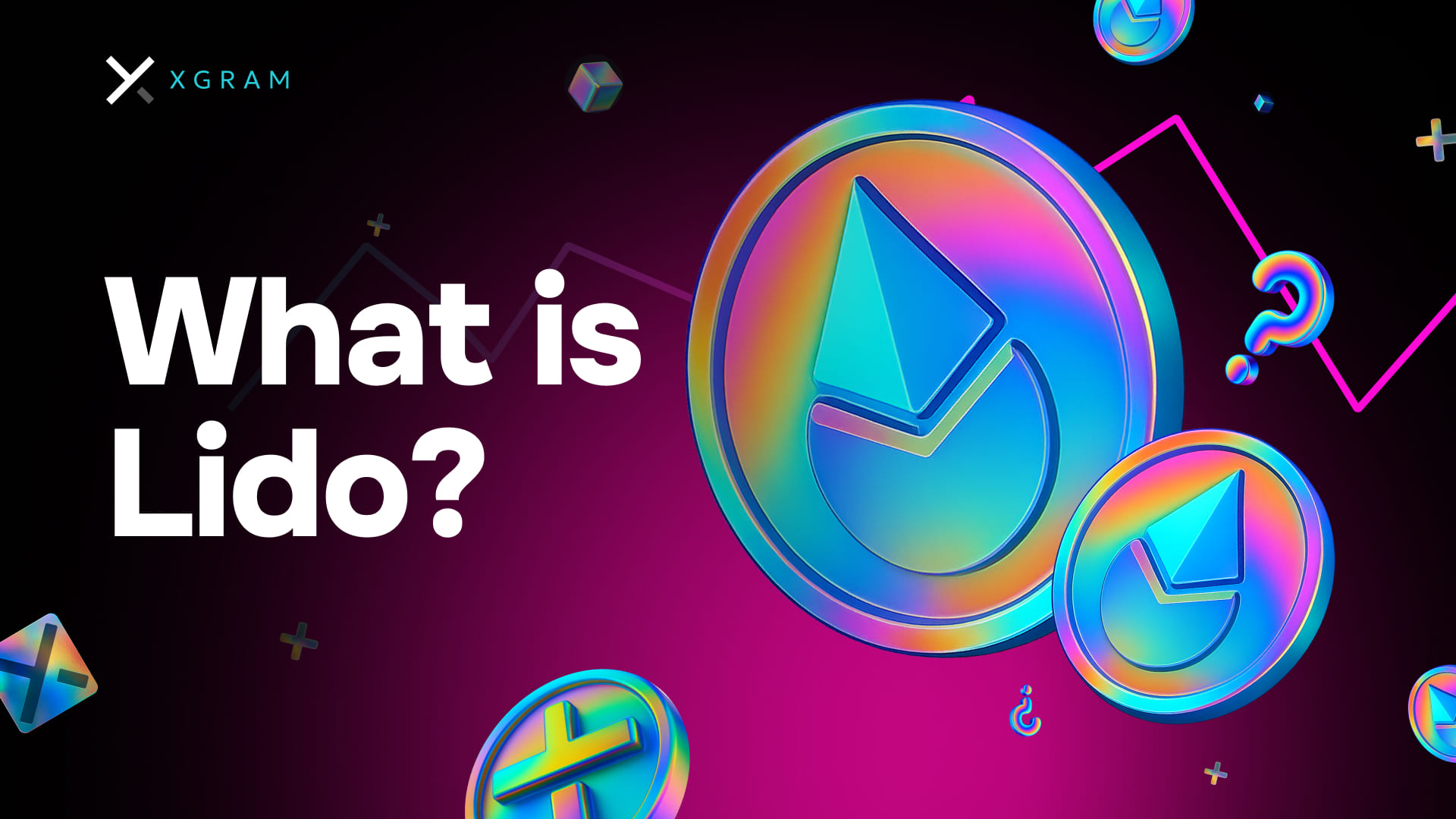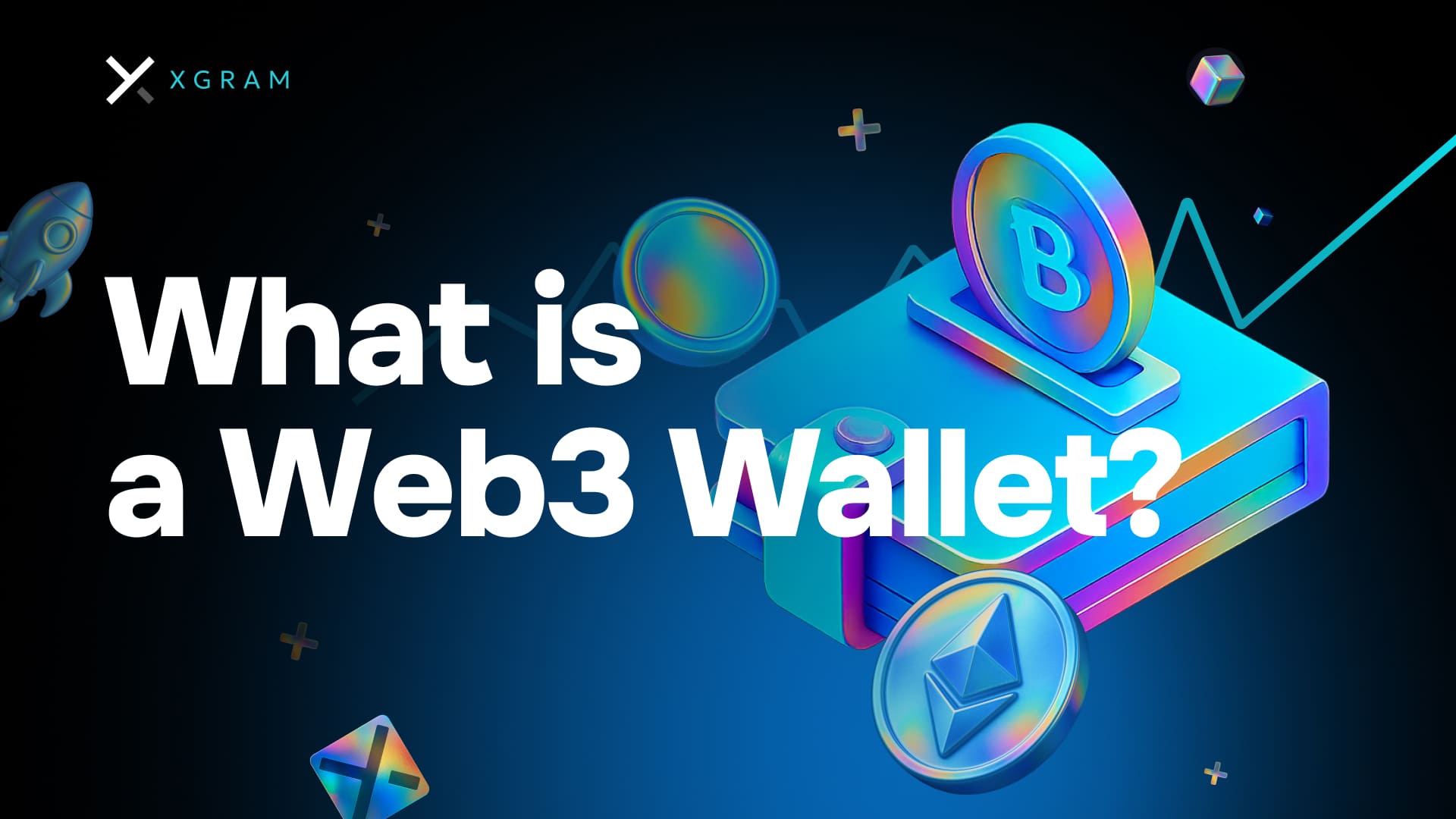Bitcoin may dominate headlines with its historic surge past $120,000, but savvy investors know the real action happens in altcoins. These alternative cryptocurrencies consistently deliver outsized returns during bull markets, often multiplying 5-10x while Bitcoin adds percentage points. As of October 2025, the altcoin market cap exceeds $1.6 trillion, signaling strong momentum heading into what many analysts expect to be a full-blown altseason by year-end.
The challenge? With thousands of altcoins available, separating legitimate projects from pump-and-dump schemes requires careful analysis. This guide breaks down the 11 best altcoins to buy right now, balancing proven blue-chip stability with high-upside emerging projects. Whether you're a conservative investor seeking established protocols or a risk-tolerant trader hunting 100x gems, this list covers the entire spectrum of opportunities in today's crypto market.
1. Ethereum (ETH): The smart contract king
Ethereum remains the undisputed leader in smart contract platforms, serving as the foundation for decentralized finance (DeFi), NFTs, and thousands of decentralized applications. Trading around $4,140 in October 2025, ETH continues to evolve with major infrastructure upgrades that strengthen its long-term value proposition.
The Pectra upgrade, launched in May 2025, introduced features that dramatically improved Layer 2 development and reduced gas fees through EIP-4844 (Proto-Danksharding). This technical progress coincides with growing institutional interest as firms like BlackRock explore Ethereum for tokenizing real-world assets. Ethereum ETFs, approved over a year ago, continue bringing steady capital inflows from traditional finance.
Why Ethereum stands out:
- Over $87 billion in total value locked across DeFi protocols
- Most active developer ecosystem in crypto with continuous innovation
- Institutional adoption accelerating through ETFs and asset tokenization
- Transition to proof-of-stake reduced energy consumption by 99%
Analysts project ETH could reach $8,000-10,000 by late 2025 if mainstream financial adoption continues accelerating. While less explosive than smaller altcoins, Ethereum offers blue-chip reliability combined with substantial upside potential.
2. Solana (SOL): The speed demon challenging Ethereum
Solana has matured from the "Ethereum killer" narrative into a legitimate powerhouse processing over 65 million transactions daily with minimal fees. Trading around $220 in October 2025, SOL benefits from explosive growth in meme coins, DeFi protocols, and consumer-facing applications built on its high-speed infrastructure.
The approval of VanEck's Solana ETF in July 2025 brought fresh legitimacy and institutional capital to the project. Solana's Saga smartphone series continues attracting mainstream users, while partnerships with payment giants like Visa validate its real-world utility. The network's $9+ billion in total value locked demonstrates staying power beyond speculative hype.
Why Solana stands out:
- Processes up to 65,000 transactions per second with sub-second finality
- Average transaction cost of $0.00025 enables micro-payments
- Hub for NFTs, gaming, and decentralized physical infrastructure (DePIN)
- Growing ecosystem of meme coins generating billions in trading volume
Price predictions suggest SOL could reach $300-370 by December 2025 as adoption expands. The blockchain's consumer focus and technical performance position it uniquely among top altcoins.
3. XRP: Institutional cross-border payments leader
XRP continues its remarkable comeback story after resolving its lengthy SEC lawsuit in early 2025. Trading around $2.85 in October, Ripple's token has gained regulatory clarity that opens doors for institutional adoption previously closed during years of legal uncertainty.
Ripple's On-Demand Liquidity (ODL) service uses XRP to facilitate instant international money transfers, with major banks in Asia and Latin America now integrating RippleNet technology. The launch of RLUSD, Ripple's dollar-backed stablecoin on the XRP Ledger, bridges traditional finance with crypto liquidity. Multiple XRP spot ETF applications await SEC decisions in October 2025, with approval odds estimated at 95% by Bloomberg analysts.
Why XRP stands out:
- Settlements complete in 3-5 seconds at fraction-of-a-cent costs
- UN Capital Development Fund recognized XRP for affordable remittances
- Regulatory clarity following SEC lawsuit resolution
- Growing network of financial institutions using RippleNet
Conservative forecasts put XRP at $5-7 by late 2025, while bullish scenarios suggest $10+ if ETF approvals materialize and institutional adoption accelerates.
4. Cardano (ADA): The academic blockchain under $1
Cardano trades around $0.80 in October 2025, making it one of the best altcoins under $1 with a proven track record. The blockchain's peer-reviewed, research-driven approach has built a $28+ billion market cap despite a slower development pace than competitors.
Recent Bitstamp listing and expanded ADA staking services are growing Cardano's U.S. market presence with improving regulatory clarity. The 2025 roadmap includes Hydra upgrades for enhanced scalability and strategic partnerships in Africa and Latin America driving global adoption. Cardano's proof-of-stake model consumes far less energy than proof-of-work systems, appealing to sustainability-focused investors.
Why Cardano stands out:
- Scientific approach with peer-reviewed research backing development
- Growing ecosystem of DeFi protocols and decentralized applications
- Real-world use cases in developing markets for identity and payments
- Affordable entry point under $1 with substantial upside potential
Price predictions vary widely, with conservative estimates targeting $1.50-2.50 and bullish scenarios reaching $4-6 if adoption accelerates. The combination of solid fundamentals and low price makes ADA attractive for portfolio diversification.
5. Polygon (MATIC): Ethereum scaling solution
Polygon has established itself as Ethereum's go-to scaling solution, processing millions of transactions daily at a fraction of Ethereum's mainnet costs. The network hosts major brands, gaming applications, and DeFi protocols that benefit from fast, cheap transactions while maintaining Ethereum's security guarantees.
Polygon's transition to the POL token and zkEVM technology positions it at the forefront of zero-knowledge proof scaling. Major partnerships with companies like Starbucks, Disney, and Nike demonstrate mainstream adoption of blockchain technology through Polygon's infrastructure. The network's focus on Web3 gaming and social applications creates diverse revenue streams beyond pure DeFi.
Why Polygon stands out:
- Low transaction fees averaging $0.01-0.02 enable micro-transactions
- Strong partnerships with Fortune 500 companies for real-world use cases
- zkEVM technology offers enhanced privacy and scaling capabilities
- Active ecosystem with hundreds of dApps and growing developer community
While MATIC price has been consolidating, the network's continued adoption and technical innovations position it well for the next bull phase. Polygon remains essential infrastructure for Ethereum's scaling roadmap.
6. Chainlink (LINK): The oracle network powering smart contracts
Chainlink serves as critical infrastructure for the entire crypto ecosystem, providing secure, tamper-proof data feeds that smart contracts need to function. Without oracles like Chainlink connecting blockchains to real-world data, DeFi protocols couldn't access price feeds, weather data, or any off-chain information.
In 2025, Chainlink has expanded beyond price oracles into cross-chain interoperability with CCIP (Cross-Chain Interoperability Protocol), enabling seamless asset transfers between different blockchains. Major financial institutions are exploring Chainlink for proof-of-reserves and real-world asset tokenization, validating the technology's enterprise-grade reliability.
Why Chainlink stands out:
- Secures billions in value across hundreds of DeFi protocols
- No direct competitors providing comparable security and reliability
- Expanding into cross-chain infrastructure with CCIP technology
- Institutional adoption for real-world asset tokenization and verification
LINK's value proposition grows stronger as blockchain adoption increases, since virtually every smart contract application needs reliable oracle services. This "picks and shovels" positioning makes Chainlink a safer bet than many speculative altcoins.
7. Avalanche (AVAX): The subnet specialist
Avalanche's unique subnet architecture allows developers to launch custom blockchains with specialized rulesets, offering flexibility that traditional Layer 1s can't match. In 2025, new subnets focused on gaming, real-world assets, and institutional use cases are driving renewed ecosystem growth.
The network delivers on its promise of fast finality and high throughput, often outperforming Ethereum in speed and cost. Institutional players are exploring Avalanche for compliant, purpose-built blockchains that meet regulatory requirements while maintaining decentralization. Gaming partnerships and DeFi protocols continue expanding despite broader market volatility.
Why Avalanche stands out:
- Subnet technology enables customizable blockchain parameters for specific use cases
- Near-instant transaction finality through Avalanche consensus mechanism
- Growing institutional interest for regulated blockchain deployment
- Strong ecosystem of DeFi protocols, gaming applications, and NFT projects
AVAX has shown technical signs of recovery from 2024 lows, with ecosystem activity ticking upward. For investors seeking exposure to modular blockchain infrastructure, Avalanche represents a compelling opportunity.
8. Dogecoin (DOGE): The meme coin with staying power
Dogecoin continues defying skeptics who dismissed it as a joke. Trading around $0.23 in October 2025, DOGE maintains its position as one of the most recognized cryptocurrencies globally, with deep cultural roots and a passionate community that refuses to let it fade.
While Dogecoin lacks technical sophistication, it has achieved something rare: genuine mainstream adoption for payments. Companies like Tesla, AMC Theaters, and GameStop accept DOGE for purchases, validating its use case beyond speculation. The coin's low fees and one-minute block times make transactions fast and cheap. Cultural momentum from Elon Musk and active online communities keeps Dogecoin relevant across market cycles.
Why Dogecoin stands out:
- Massive name recognition and cultural penetration beyond crypto enthusiasts
- Real-world merchant acceptance for goods and services
- Active community providing organic marketing and development support
- Potential Dogecoin ETF approval boosting institutional accessibility
Price predictions suggest DOGE could reach $0.40-0.60 during the next altcoin rally. While fundamentally simple, Dogecoin's combination of adoption, liquidity, and cultural relevance makes it impossible to ignore.
9. Polkadot (DOT): The blockchain interoperability hub
Polkadot pioneered the parachain model, allowing independent blockchains to securely share information and assets through a central relay chain. This interoperability vision addresses one of blockchain's biggest challenges: connecting isolated networks into a cohesive Web3 ecosystem.
Recent parachain auctions have brought diverse projects to Polkadot's network, from DeFi platforms to gaming applications. The upcoming Polkadot 2.0 upgrade promises enhanced scalability and more flexible parachain economics. Developer activity remains strong despite price consolidation, with several well-funded teams building critical infrastructure.
Why Polkadot stands out:
- Unique parachain architecture enables true cross-chain communication
- Founded by Ethereum co-founder Gavin Wood with strong technical pedigree
- Governance model allows community-driven evolution and upgrades
- Growing ecosystem of parachains providing specialized functionality
DOT serves as a long-term infrastructure bet on multi-chain future. If blockchain interoperability becomes essential—and many believe it will—Polkadot is positioned to capture significant value.
10. VeChain (VET): Supply chain blockchain under $1
VeChain targets enterprise adoption through supply chain tracking and anti-counterfeiting solutions. Trading well under $1, VET offers affordable exposure to blockchain technology solving real-world business problems rather than pure financial speculation.
The platform works with major corporations to track products from manufacture to consumer, providing transparency that traditional databases can't match. VeChain's focus on sustainability tracking and carbon credit systems aligns with growing corporate ESG requirements. Partnerships span luxury goods, automotive, logistics, and food safety sectors.
Why VeChain stands out:
- Proven enterprise partnerships with Fortune 500 companies
- Dual-token model (VET and VTHO) provides economic sustainability
- Focus on real-world utility rather than DeFi speculation
- Entry point under $1 makes portfolio allocation easy
VeChain won't deliver 100x returns overnight, but its focus on solving actual business problems provides downside protection that pure speculation lacks. For conservative investors, VET offers exposure to blockchain's practical applications.
11. Algorand (ALGO): The carbon-negative blockchain under $1
Algorand combines speed, security, and environmental sustainability into a pure proof-of-stake blockchain that processes thousands of transactions per second with near-instant finality. Trading under $1, ALGO provides affordable access to enterprise-grade blockchain technology.
The platform has achieved carbon-negative status through strategic partnerships, appealing to organizations prioritizing environmental responsibility. Algorand's focus on central bank digital currencies (CBDCs) and stablecoin infrastructure positions it at the intersection of traditional finance and blockchain technology. Several countries are exploring Algorand for government-backed digital currency experiments.
Why Algorand stands out:
- Pure proof-of-stake consensus achieves true decentralization without energy waste
- Transaction finality in under 5 seconds with minimal fees
- Strong partnerships with governments exploring CBDCs
- Affordable price under $1 with strong technical fundamentals
While Algorand hasn't captured meme coin mania, its technical excellence and government partnerships provide long-term value. ALGO represents a patient investor's bet on blockchain infrastructure adoption.
Where to buy altcoins
Once you've identified which altcoins to buy, choosing the right platform matters significantly for security, fees, and user experience. Different platforms serve different needs, from beginner-friendly exchanges to privacy-focused instant swap services.
For newcomers, centralized exchanges like Coinbase, Kraken, and Binance offer the easiest entry point. These platforms provide intuitive interfaces, fiat on-ramps allowing credit card or bank transfer purchases, and customer support when issues arise. They support most major altcoins and offer additional features like staking and educational resources. The tradeoff is mandatory KYC verification and slightly higher fees compared to alternatives.
Privacy-conscious traders have other options. Instant swap services allow you to exchange cryptocurrencies without creating accounts or submitting identity documents. Xgram exemplifies this approach, supporting over 1,000 trading pairs with transactions completing in 10-15 minutes. You simply select your input and output currencies, provide your wallet address, and complete the exchange. No registration, no KYC requirements, and no storing funds on the platform. For exchanges exceeding $20,000, personal manager assistance ensures smooth execution.
Decentralized exchanges (DEXs) like Uniswap and PancakeSwap offer another path for buying altcoins, especially newer tokens not yet listed on major centralized platforms. DEXs connect directly to your Web3 wallet, giving you complete control over your funds throughout the trading process. The learning curve is steeper, but the autonomy and access to emerging projects make DEXs essential tools for experienced traders.
Platform comparison for buying altcoins:
- Centralized exchanges (Coinbase, Kraken): Best for beginners, fiat support, wide selection
- Instant swap services (Xgram): Best for privacy, no KYC, quick exchanges between cryptos
- Decentralized exchanges (Uniswap): Best for new tokens, full control, no intermediaries
- P2P platforms: Best for local currency trades, negotiable rates, various payment methods
Security should guide your platform choice regardless of which option you select. Enable two-factor authentication, verify all URLs carefully to avoid phishing sites, and never share private keys or seed phrases. After purchasing altcoins, transfer them to a personal wallet where you control the private keys—hardware wallets like Ledger or Trezor offer maximum security for long-term holdings.
Comparison table
| Altcoin | Current Price (Oct 2025) | Market Cap | Primary Use Case | Risk Level |
|---|---|---|---|---|
| Ethereum (ETH) | ~$4,140 | $502B+ | Smart contracts, DeFi | Low |
| Solana (SOL) | ~$220 | $113B | High-speed dApps | Medium |
| XRP | ~$2.85 | $170B+ | Cross-border payments | Medium |
| Cardano (ADA) | ~$0.80 | $28B+ | Smart contracts | Medium |
| Polygon (MATIC) | Variable | $10B+ | Ethereum scaling | Medium |
| Chainlink (LINK) | Variable | $15B+ | Oracle services | Low-Medium |
| Avalanche (AVAX) | Variable | $12B+ | Subnet architecture | Medium |
| Dogecoin (DOGE) | ~$0.23 | $33B+ | Payments, meme culture | High |
| Polkadot (DOT) | Variable | $9B+ | Interoperability | Medium |
| VeChain (VET) | Under $1 | $3B+ | Supply chain tracking | Medium-High |
| Algorand (ALGO) | Under $1 | $6B+ | CBDCs, green blockchain | Medium |
How to choose the best altcoins for your portfolio
Selecting winning altcoins requires systematic research rather than gambling on hype. Start by understanding your investment goals and risk tolerance. Conservative investors should weight portfolios toward established altcoins like Ethereum and Solana, while risk-tolerant traders can allocate portions to smaller-cap opportunities with higher upside potential.
Evaluate each project's fundamentals before investing. Does the altcoin solve a real problem, or is it pure speculation? Check the team's background and track record—experienced developers with successful past projects inspire more confidence than anonymous founders. Review the whitepaper for technical coherence and realistic roadmap milestones. Security audits from reputable firms like CertiK or Hacken provide essential validation.
Community strength often predicts long-term success. Active development, engaged social media presence, and growing holder numbers signal genuine interest rather than paid promotion. Check GitHub repositories for regular commits and ongoing development. Beware of projects that promise unrealistic returns or use aggressive marketing without substance.
Market timing matters significantly in crypto. The Altcoin Season Index currently sits at 51/100, indicating building momentum but not peak mania. Historically, altcoins perform best when Bitcoin consolidates after major rallies, allowing capital to rotate into alternative assets. October-December traditionally shows strong performance, with Q4 averaging the best returns of the year.
Key factors to evaluate before buying altcoins:
- Verify the project has real-world utility or solves an actual problem
- Research the development team's background and transparency
- Check market capitalization and trading volume for adequate liquidity
- Review tokenomics including supply schedule and inflation rate
- Monitor on-chain metrics like active wallets and transaction volume
- Assess regulatory risk based on token classification and jurisdiction
- Diversify across multiple altcoins to reduce single-project risk
Remember that altcoin investing carries significant risk. Even established projects can fall 50-80% during bear markets. Never invest more than you can afford to lose completely, and consider altcoins as part of a balanced portfolio that includes safer assets. With proper research and risk management, altcoins offer some of the market's best asymmetric return opportunities. You've got this!
Disclaimer: This article is for informational purposes only and does not constitute financial advice. Cryptocurrency investments carry high risk and extreme volatility. Altcoins are particularly risky due to lower liquidity and higher failure rates compared to Bitcoin. Always conduct your own research (DYOR), understand the risks fully, and only invest capital you can afford to lose. Past performance does not guarantee future results. Consider consulting with a qualified financial advisor before making investment decisions.
Frequently Asked Questions
What are altcoins and why should I invest in them?
Altcoins are all cryptocurrencies except Bitcoin. The term simply means "alternative coins." They include Ethereum, Solana, XRP, and thousands of other tokens. You should consider altcoins because they often deliver higher percentage returns than Bitcoin during bull markets due to smaller market capitalizations requiring less capital to move prices. They also provide exposure to specific blockchain innovations like smart contracts, DeFi, NFTs, and cross-border payments. However, altcoins carry higher risk than Bitcoin due to greater volatility, less liquidity, and higher project failure rates. Proper diversification across multiple quality altcoins can balance risk while capturing upside potential.
Are altcoins a good investment in 2025?
Yes, altcoins present compelling opportunities in 2025, but success requires careful selection. The market has matured significantly with regulatory clarity improving for projects like XRP and Ethereum. Institutional adoption through ETFs brings legitimacy and capital to leading altcoins. The Altcoin Season Index at 51/100 suggests building momentum toward a full altseason. However, not all altcoins will succeed—many will fail or dramatically underperform. Focus on projects with proven teams, real-world utility, active development, and strong communities. Avoid purely speculative tokens without fundamentals. With Bitcoin consolidating above $120,000, conditions favor capital rotation into quality altcoins through year-end.
What's the difference between altcoins under $1 and higher-priced tokens?
Price per token is largely irrelevant—what matters is market capitalization and potential for growth. A token under $1 isn't automatically cheaper or better value than a $100 token. Cardano at $0.80 has a $28 billion market cap, while some $50 tokens have market caps under $500 million. Lower-priced tokens appeal psychologically because you can buy more units, but percentage gains depend on market cap growth, not token price. That said, altcoins under $1 often have smaller market caps with more room to grow, though they also carry higher risk. Evaluate tokens based on fundamentals, not price. A $0.10 token can be overvalued while a $1,000 token can be undervalued depending on their respective market caps and utility.
How do I buy altcoins safely?
Buy altcoins on reputable exchanges like Coinbase, Kraken, or Binance that offer strong security measures and regulatory compliance. For privacy-focused purchases, platforms like Xgram enable instant swaps without KYC requirements. Always enable two-factor authentication on exchange accounts and use unique, complex passwords. After purchasing, transfer altcoins to a personal wallet where you control private keys—hardware wallets like Ledger or Trezor offer maximum security for long-term holdings. Never leave large amounts on exchanges, which remain vulnerable to hacks. Verify all website URLs carefully to avoid phishing sites, and never share private keys or seed phrases with anyone. Start with small amounts when testing new platforms to minimize risk.
When is altcoin season and how can I profit from it?
Altcoin season occurs when altcoins significantly outperform Bitcoin, typically after BTC consolidates following major rallies. The Altcoin Season Index tracks this phenomenon—readings above 75/100 indicate full altseason. Currently at 51/100 in October 2025, the index shows momentum building. Historically, Q4 shows the strongest performance, with altcoins often gaining 200-500% during peak altseason. To profit, position in quality altcoins before the rally begins, diversify across multiple projects to capture broad momentum, take partial profits as prices rise to secure gains, and avoid chasing parabolic moves that typically end in sharp corrections. Not every altcoin pumps equally—focus on projects with strong fundamentals rather than pure speculation. Set stop-losses to protect capital if momentum reverses.
What are the risks of investing in altcoins?
Altcoins carry substantially higher risk than Bitcoin. Extreme volatility is normal—80-90% corrections from peaks happen frequently, even for established projects. Many altcoins fail completely, going to zero when development stops or founders abandon projects. Rug pulls and scams remain common, especially with newer tokens lacking audits or transparent teams. Regulatory uncertainty creates legal risk, particularly for tokens classified as securities. Liquidity can disappear during market stress, making it impossible to exit positions at reasonable prices. Technology risk exists as superior competitors can obsolete entire projects. Smart contract bugs can drain funds from protocols. Despite these risks, proper research, diversification, and position sizing allow disciplined investors to manage risk while capturing altcoins' high-return potential.
Should I diversify across multiple altcoins or focus on one?
Diversification across multiple altcoins significantly reduces portfolio risk compared to concentration in single projects. Even blue-chip altcoins like Ethereum or Solana face technological, regulatory, or competitive risks that could impact prices. A balanced approach might allocate 40-50% to established large-caps (ETH, SOL, XRP), 30-40% to mid-caps with strong fundamentals (ADA, LINK, AVAX), and 10-20% to smaller high-risk/high-reward opportunities. This structure provides stability from proven projects while maintaining upside exposure. Avoid over-diversification beyond 10-15 altcoins—you lose ability to deeply research each position and dilute returns from winners. Never put all capital in one altcoin regardless of conviction. If that project fails or faces unexpected challenges, concentrated positions can devastate portfolios. Diversification is risk management that still allows substantial gains during altseason.
The altcoin market in 2025 offers unprecedented opportunities for investors willing to conduct proper research and manage risk carefully. From established giants like Ethereum and Solana to emerging projects solving real-world problems, quality options span every risk tolerance level. Focus on fundamentals over hype, diversify intelligently, and maintain discipline during both euphoria and panic. With Bitcoin above $120,000 and institutional capital flowing into crypto, conditions favor a strong altseason in the months ahead. Position wisely now to capture the gains when momentum accelerates.
